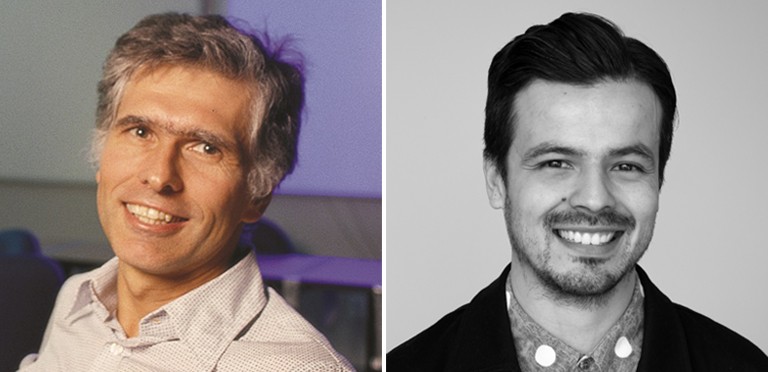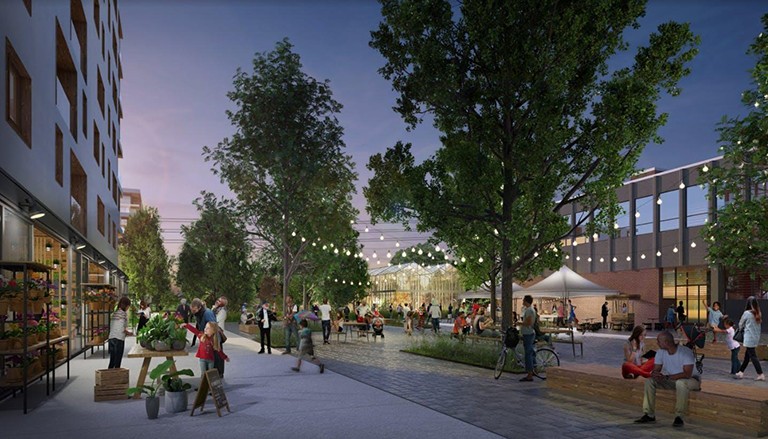ÉTS and Concordia are launching a joint scholarship program this September
 Daniel Forgues and Juan Ortiz-Apuy
Daniel Forgues and Juan Ortiz-Apuy
The École de technologie supérieure (ÉTS) in Montreal and Concordia are joining forces to create an innovative new scholarship program. It will bring together artistic and engineering approaches to encourage those in both fields to learn from each other while contributing to public space.
The bursary is named after Daniel Forgues, the retired professor in the Department of Construction Engineering at ÉTS who developed the program. It seeks to open up a common corridor of thought, and action, to raise awareness around environmental issues, public art and more.
“What I felt was missing in engineering is the sensibility that artists have to express their ideas and share their thoughts. It led me to think that pairing up students in engineering and fine arts would help them develop new perspectives with regards to eco-responsibility,” explains Forgues, who has worked in sustainable building since the 1980s and created the first two sustainable building courses offered at ÉTS.
“The first year is going to be like an experiment for the project, but we have a budget for five years.”

Working with an eco-neighbourhood project in Ahuntsic-Cartierville
Directed at students at ÉTS and Concordia’s Faculty of Fine Arts, the Daniel Forgues Art, Engineering and Environment scholarship program has $100,000 earmarked for the project.
Each year, one student from each university will come together to create a temporary public art installation, with the goal of raising awareness around and taking action toward the reduction of the human environmental footprint.
The program will be part of the development of the Louvain East eco-neighbourhood, which is being guided by the City of Montreal, the borough of Ahuntsic-Cartierville and the community.
Once complete, the district will include up to 1,000 housing units. They will all be affordable and at least 50 per cent will have a designated social and community mission.
The site will also include a school, a community centre, local businesses, urban agriculture and a food hub, as well as public art.
‘It’s important for public art to be part of the curriculum’
“Because we have a one per cent public art program in Quebec, where one per cent of the budget of public buildings costing $150,000 or more needs to be dedicated to art, it’s an incredible opportunity for artists to work and get paid for it,” says Juan Ortiz-Apuy, Concordia assistant professor of critical perspectives on inclusion in 3D art practices in studio arts.
“Some artists make a living through this program, which is why it’s important for our students to be aware of it. I see this as a bit of an extension of that.”
Apuy taught a course on public art and sustainability funded by the Réseau express métropolitain (REM) last summer.
“I think it’s extremely meaningful for the students to get this experiential learning opportunity outside of the classroom. It involves a certain responsibility, which is one of the reasons that it’s important for public art to be part of the curriculum.”
The scholarship program will aim to create a space for artistic mediation and creation by building on a mutually beneficial network of art and engineering.
It will innovate by opening disciplines and contributing to the democratisation of all types of work, as well as sensitize the scientific and artistic academic communities to a way of understanding, representing and discussing complex concepts.
The new program is part of ÉTS’s Programme d’intégration des arts et de la culture (PIAC), which aspires to foster partnerships with the arts faculties of other Montreal universities and make ÉTS a place for the creation, dissemination and promotion of arts and culture.
ÉTS and Concordia will launch a call for proposals in September, giving students from both institutions plenty of time to think about their projects.
First, four teams of two students, one from each university, will be invited to present a proposal for their artwork. One team will be selected to realize its proposal.
Find out more about the Daniel Forgues Art, Engineering and Environment scholarship program.
Learn about Concordia’s Faculty of Fine Arts.